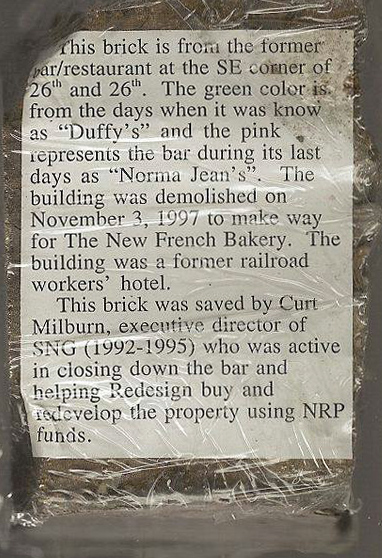Duffy’s
2601 26th Ave. So
Minneapolis
This page covers the venues located at 2601 – 26th Ave. So., at the notorious “Hub of Hell” in South Minneapolis:
- Heinie’s Bar
- Duffy’s Bar
- Norma Jean’s
THE BUILDING
According to the City’s building permit cards, the building was erected in 1886. The original footprint was 12′ by 22′.
EXCHANGE HOTEL
The building was originally the Exchange Hotel and saloon, and in the early days it was owned by George E. Thompson II. Thompson was born in West Union, Iowa, on December 25, 1859. He worked for the railroad for several years before moving to Minneapolis, where he owned the Bar. He died from pneumonia at the age of 46 on May 8, 1906. His wife, Louise, ran the hotel and saloon for a while but eventually lost it and moved in with one of their sons.
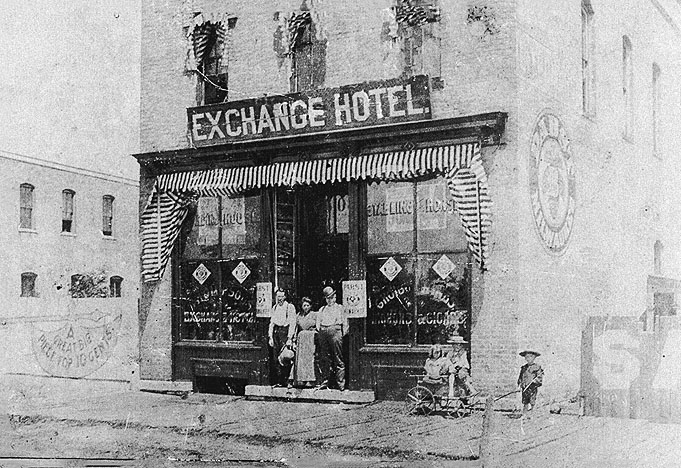
John Gallinaugh had a liquor license at this address as far back as May 1, 1899 to 1903. Permit notes call it a saloon through 1904.
In 1905 to 1914 it may have been a store.
In 1921 there was a 16′ by 20′ addition – perhaps the second floor.
In 1927, during Prohibition, Fred R. Coyle ran a restaurant.
The place got its liquor license shortly after Prohibition was over, in January 1934. The owners were Henry C. Reeves and F.W. Meissner. That year there was a significant addition measuring 66′ by 26′.
HEINIES’S BAR
There were a couple of Heinie’s bars – the other was in St. Paul. We find one listed at this address in May 1950.
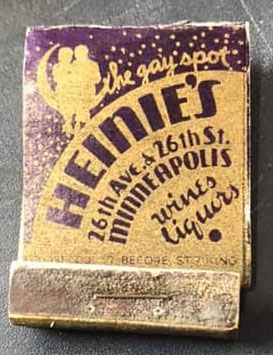
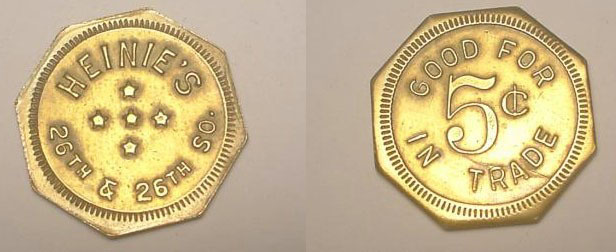
In February 1953, an article reported that $90,000 was paid for Heinie’s Bar, although it didn’t say which one.
DUFFY’S BAR
It opened as Duffy’s Bar in 1953. Presumably the liquor license was transferred to Raymond T. Duffy and his brother Joseph, who also purchased the property.
Early entertainers included quality jazz orchestras, notably the Ray Komischke Quintet.
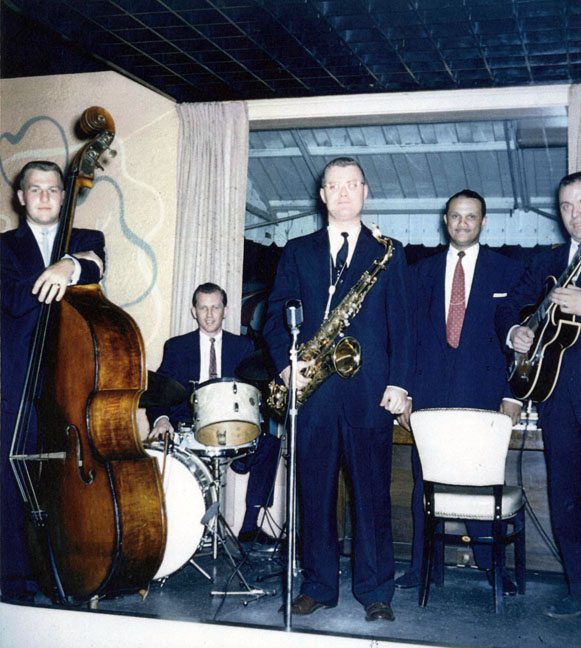
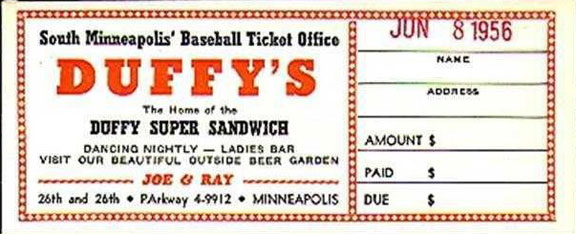
TRANSFER TO GEORGE FOSTER
On June 10, 1960, the liquor license was transferred to George C. Foster and the building and fixtures were sold to him for $250,000. I would love to know the reason for this, as I found no evidence that the Duffys lost their license. It is also curious that Foster kept the Duffy’s name.
RECONSTRUCTION
Permit cards show that a $150,000 building and alteration job was done on the building at the end of 1960/beginning of 1961, with Reco Construction Co. as the contractor. These wonderful promotional pages were posted to Facebook by Sydney Milan. They show the state of the art night club, 1961 style.
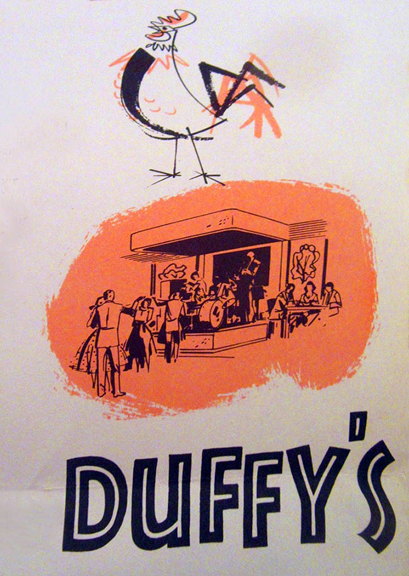
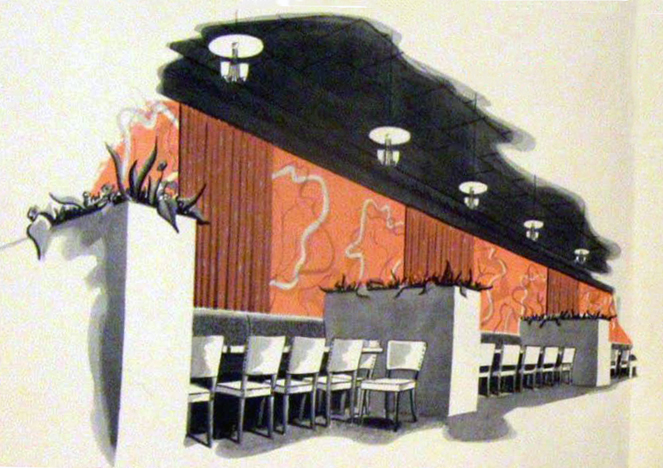
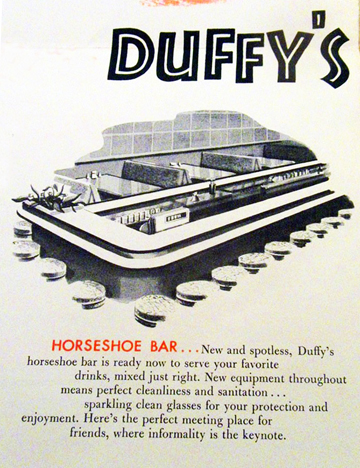
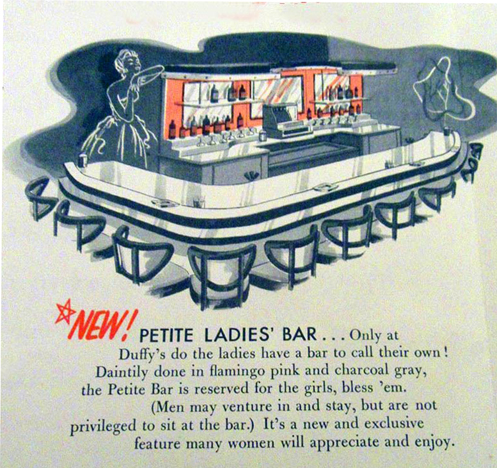
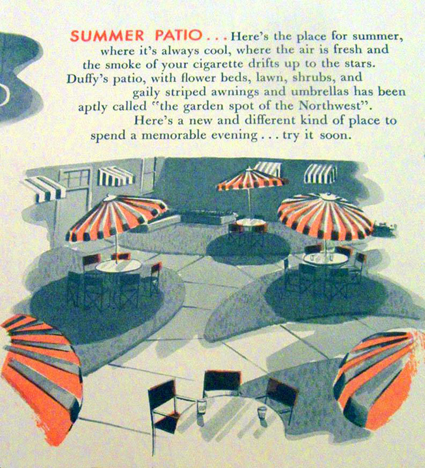
THE SATELLITE ROOM
1961 was all about the space race, and Duffy’s was all over it. The open courtyard that had been Heinie’s beer garden was closed in with a “spectacular plastic domed Satellite Room.” The bandstand, now in the center of the dance floor because of the conversion of the beer garden, was made to revolve to accommodate the dancers on all sides.
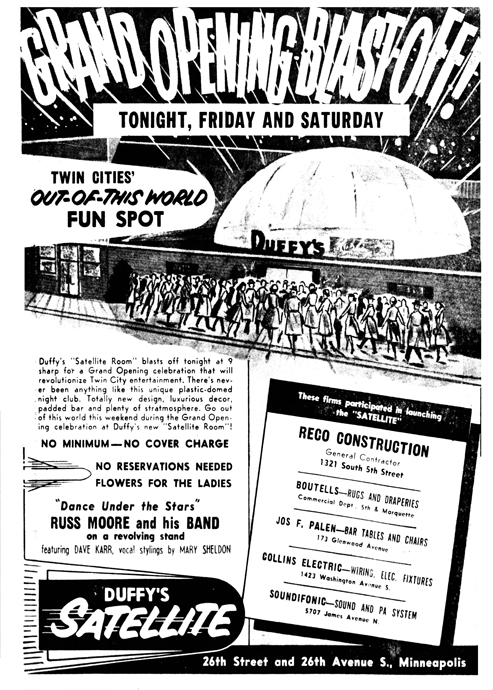
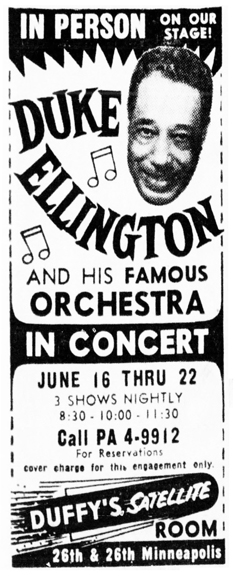

An ad in the Minneapolis Daily Herald from July 1962 advertised the Dave Kerr Quartet for Dancing, and a Twist-Limbo Contest, Monday through Thursday. There was also a talent show on Thursdays.
AUGIE AND THE TWIST
The Augie Garcia Quintet was “Packing ’em in” in September 1962. George C. Foster was “Your Host.” 1962 was the year of the Twist – the ad below from November 1962 shows that Augie’s band included Ellen as their “Twist Girl!” Other members of the band were:
- Augie on guitar
- Don Rustad on Sax and Vibes
- Art Resnick on organ
- Jesse Lopez on drums
- Shari Ferris, “Songstress”
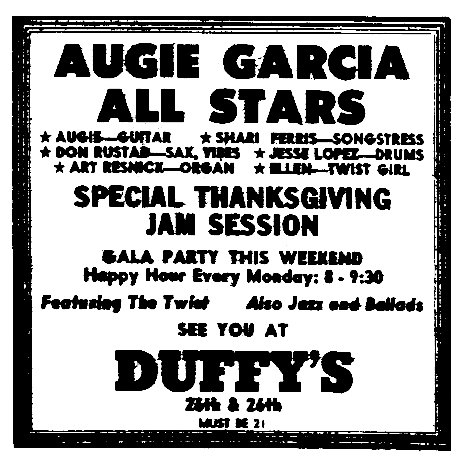
In his October 1, 1961, column in the Minneapolis Tribune, Will Jones described the scene:
At Duffy’s the theme is chaos. In the front bar, Al Braley, in derby hat, looking like one of the Foy brothers, leads old-style sing-along tunes. In the two dance rooms, Augie Garcia and quintet make conversation impossible in both simultaneously, thanks to the revolving stage in the wall between the rooms.
The Duffy’s regulars seem to favor the older of the rooms, and the action there starts early. The newer room, topped with a monster of a plastic bubble in the center, fills up later with the overflow, and in the later hours of a weekend night both dance floors are jampacked. So is all the standing and sitting space beyond.
Garcia started out his engagement there with a piano as part of his instrumentation, but the piano player complained his fingers were getting sore and bloody from trying to make himself heard. An organ was substituted for the piano, and there’s no trouble hearing that at all.
A June 1963 ad said you could dance to an orchestra nightly, but you could also twist with house band Terry and the Pirates in the Satellite Room. It appears that the plastic roof idea didn’t exactly work out, though. The permit card has an entry dated October 1963 for installing “roof over dome” at a cost of $3,000.
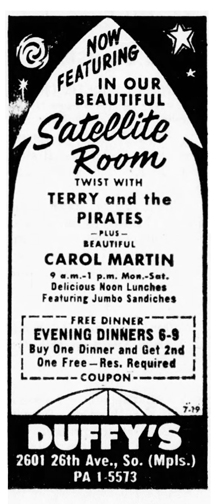
BACK TO THE DUFFY FAMILY
An article dated March 24, 1964, in the Star says that George Foster’s liquor license was revoked last February when he was convicted of selling liquor to a minor. The license was transferred back to Raymond T. Duffy. His brother, Joseph, would continue to run Duff’s downtown on his own.
On April 1, 1964, the Tribune announced, “Ray Duffy is back on the corner … 26th and 26th South that is, playing the role of friendly host again… We invite you to have fun … and frolic! Pleasing beverages … pleasing prices … Entertainment and dancing nightly.”
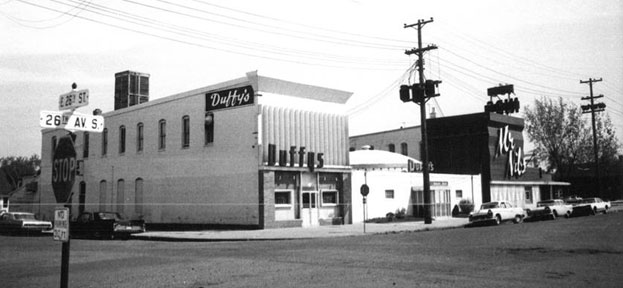
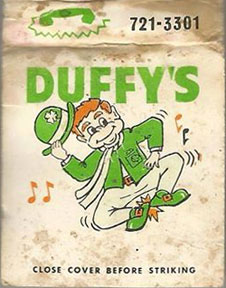
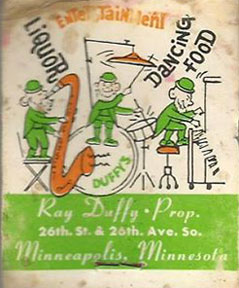
The above matchbook, posted by Justin Wood, is a little worse for wear, but love that band! Mike Duffy, Ray Duffy’s son, created the leprechaun character!
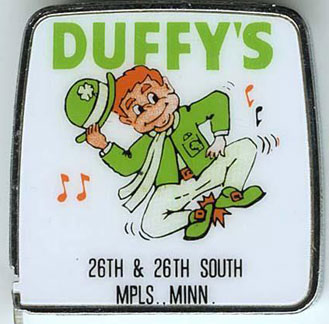
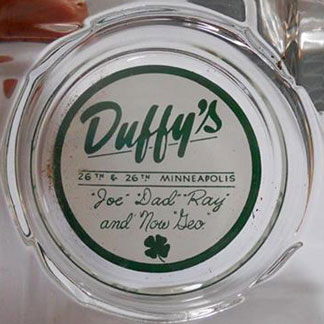
In 1975, Duffy’s underwent some sort of rehab, including a fresh coat of paint, presumably. I can’t guarantee that it was exactly this shade of green…
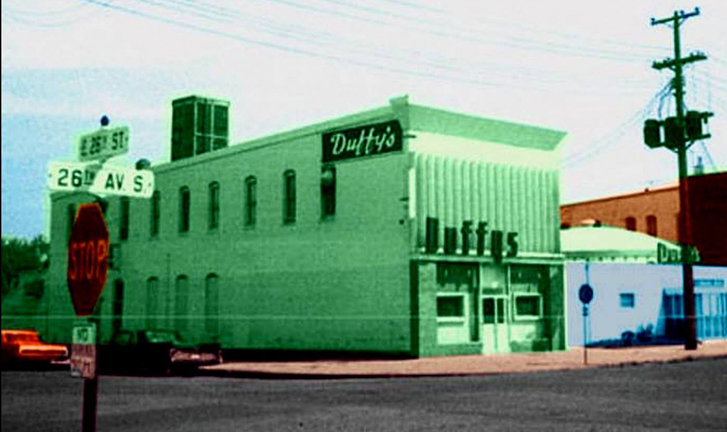
On May 26, 1976, policeman Michael Patridge, 24, was killed by gunfire at Duffy’s while working off duty after an argument.
NEW OWNERSHIP, NEW MUSIC
In July 1979, Dan and Lesley Simon-Johnson of St. Paul took over Duffy’s. The July 11, 1979, Minnesota Daily announced that Duffy’s was trashing its disco records and going Rock ‘N Roll. Although it had been around for ages, it was advertised as “Twin Cities Newest Club.” Preview week was July 12, 13, and 14. Not exactly a week, but…
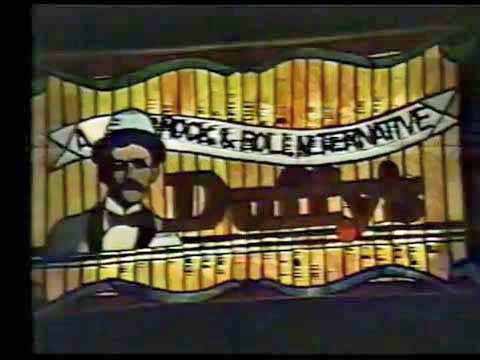
In January 1980, Dan and Lesley were given citations for running a disorderly house when two male dancers and four female patrons were arrested for disorderly conduct on Ladies’ Night. Apparently a newspaper article had described how the dancers’ G-strings routinely did not stay in place, and that the women were touching that which was illegal to touch. Two undercover policewomen were sent in and made the pinch, so to speak.
NORMA JEAN’S
In June 1984 the building was painted pink (from its traditional green) and dubbed Norma Jean’s. Again, this may be pinker than the building really was …
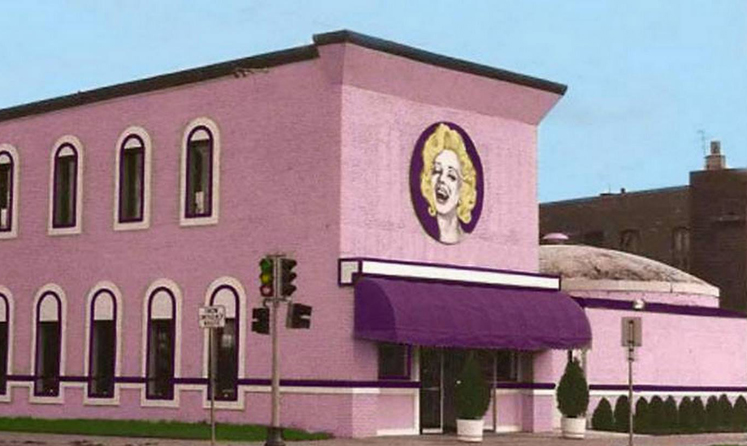
The music at Norma Jean’s was diverse and changed frequently, but by 1991 the club was accused of attracting trouble to the area with its teen nights and black clientele that included gangs. In May 1991, a young man was shot and killed in the crossfire of two gangs that had been in Norma Jeans. The man had come out of the Mirage nightclub nearby and was an innocent bystander.
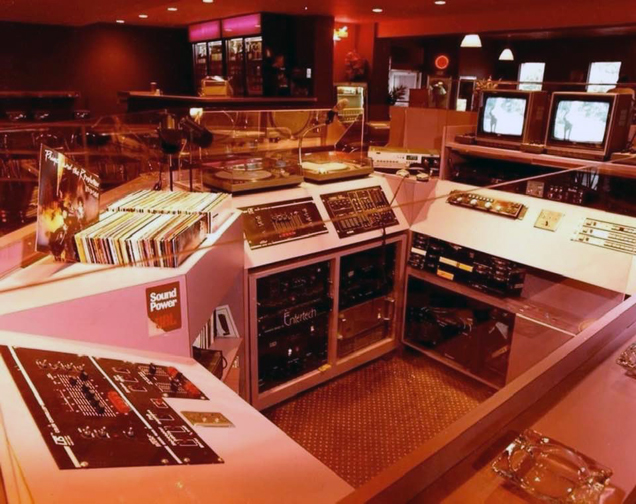
BANKRUPTCY
On December 31, 1991, Norma Jean’s abruptly closed, and owner Leslee Simon filed for Chapter 11 bankruptcy citing $600,000 in debts. Raymond T. Duffy still owned the property, and Simon had been making contract for deed payments to him for 12 years.
The nightclub had been at the center of frequent fights and shootings, prompting complaints from neighbors and surrounding businesses. They said the club’s dance parties and “urban funk” format attracted unruly patrons who became violent.
In late October 1991, more than 25 area residents showed up when the City Council’s Public Safety and Regulatory Services Committee was scheduled to review Norma Jean’s license. The meeting was canceled because Simon’s attorney, Mark Gehan, had reached an agreement that morning with an assistant city attorney.
Gehan said at the time that Norma Jean’s would be open only for Friday night reggae concerts and for special events such as wedding receptions. Since then it has rarely been open..
Gehan said accusations that the dance parties at Norma Jean’s generated violence were racist. His letter to the city said, “It has been alleged that the Urban Funk Format prompted disorder and violence in the neighborhood. The essence of that accusation is that the black persons who favor the music are troublemakers. We disagree with that and deny it. If there were racial tensions in the vicinity of 26th and 26th, it is unfair for anyone to assert that the originate with one racial group rather than another.”
(Tony Kennedy, Minneapolis Star Tribune, December 21, 1991)
A February 1992 article stated that the owners of Norma Jean’s planned to reopen the club after renovations were made, including installing a stage for live performances. Owner Leslee Simon hoped to head off foreclosure proceedings, which were scheduled to begin in court the following week. Funk Night would not return as part of the format. City Council member Tony Scallon noted that police calls had dropped to zero in the area since the club closed the preceding October. (Jill Hodges, Minneapolis Star Tribune, February 19, 1992)
There is no evidence that Norma Jean’s opened again.
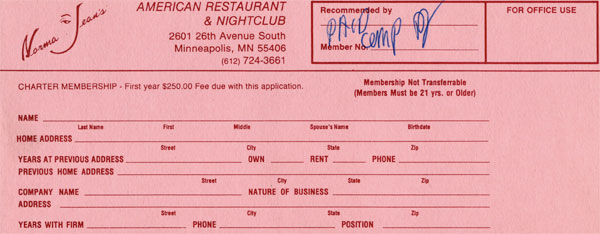
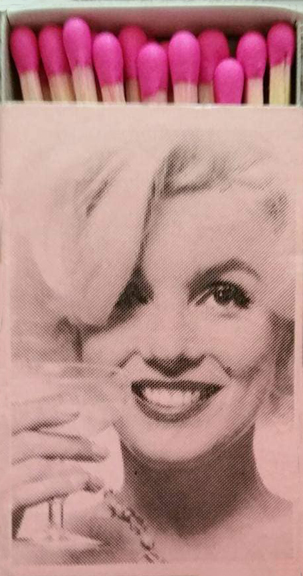
Matchbook images courtesy Jeff Mclaughlin.
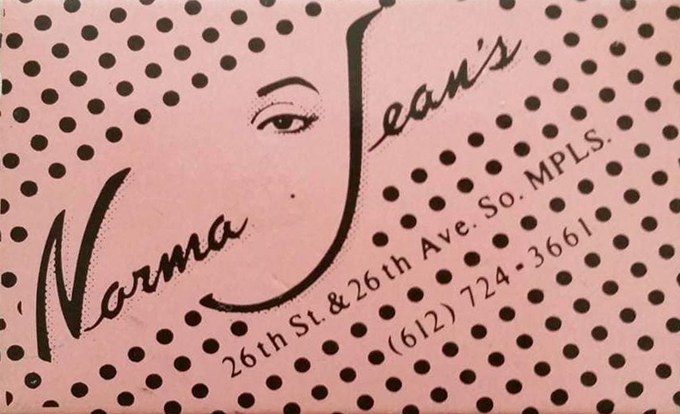
Jon Bream reported that the building burned on Saturday, October 25, 1997. He also said that the City had purchased it, that it had stood empty since 1991, and that it had been scheduled for demolition. Apparently this wasn’t big enough news on its own. (Minneapolis Star Tribune, October 28, 1997)
The building was demolished on November 3, 1997, and was rebuilt as an addition to the New French Bakery.
